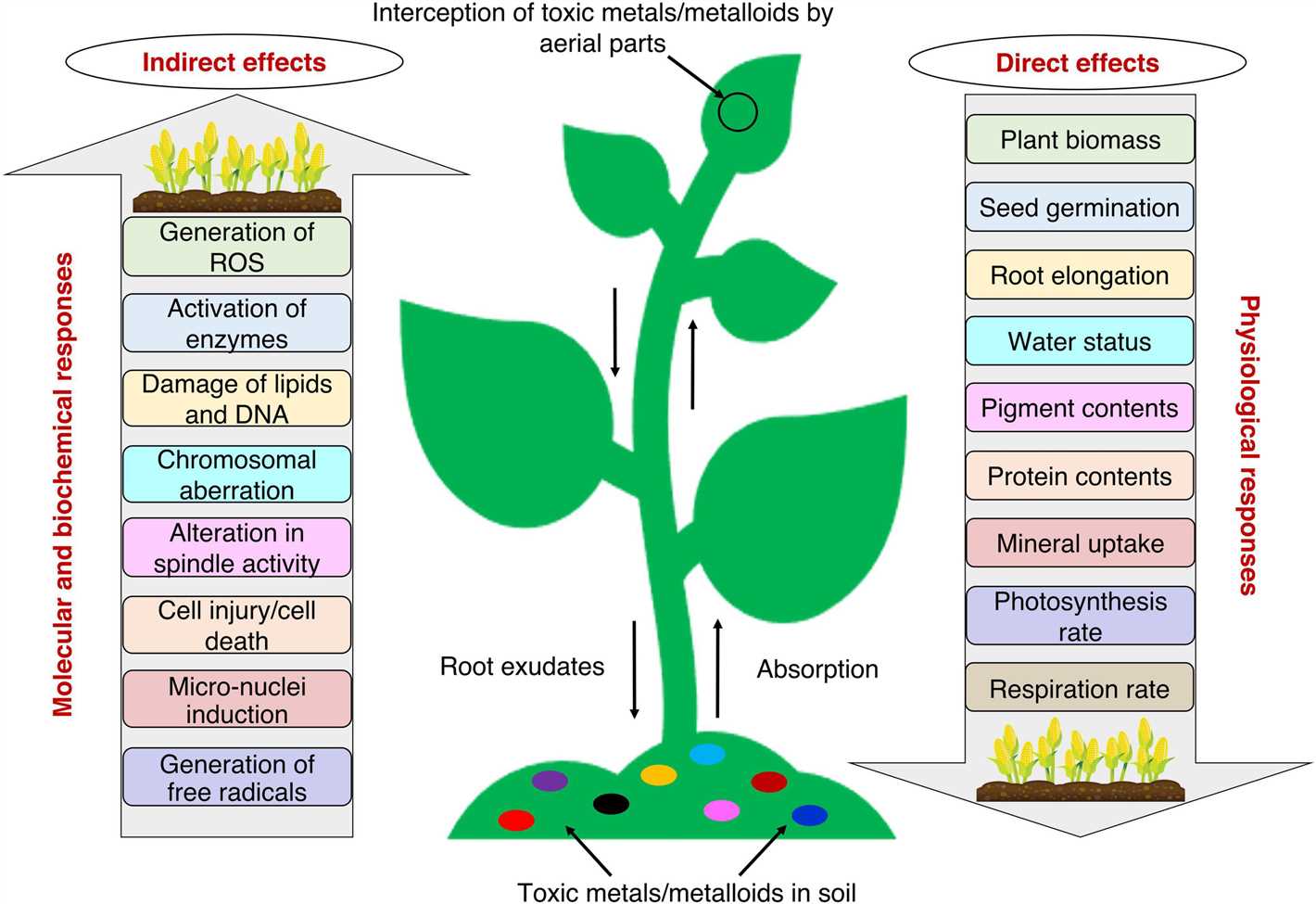- The Benefits of Planting Chrysanthemums Multiflora From Seedlings
- Step 1: Choosing the Right Time for Planting
- Factors to Consider
- Step 2: Preparing the Soil
- 1. Choose the right location
- 2. Clear the area
- 3. Loosen the soil
- 4. Improve the soil
- 5. Test the soil pH
- 6. Level the soil surface
- 7. Water the soil
- 8. Allow the soil to settle
- Creating the Ideal Growing Conditions
- Step 3: Selecting and Preparing Seedlings
- 1. Purchase or obtain seedlings
- 2. Inspect the seedlings
- 3. Prepare the planting area
- 4. Transplant the seedlings
- Choosing Healthy and Vigorous Seedlings
- Step 4: Planting the Seedlings
- Proper Techniques for Transplanting
- Step 5: Providing the Proper Care
- 1. Watering
- 2. Fertilizing
- 3. Mulching
- 4. Staking and Support
- 5. Pruning
- 6. Pest and Disease Control
- 7. Winter Protection
- Questions and Answers:
- Why should I plant Chrysanthemums Multiflora in seedlings?
- How do I start planting Chrysanthemums Multiflora in seedlings?
- When is the best time to plant Chrysanthemums Multiflora in seedlings?
- What kind of soil should I use for planting Chrysanthemums Multiflora in seedlings?
- How often should I water the Chrysanthemums Multiflora seedlings?
- What is the ideal temperature for growing Chrysanthemums Multiflora seedlings?
- Can I transplant the Chrysanthemums Multiflora seedlings directly into the garden?
- Videos: EASIEST Way to Grow Ixora Plants from Cuttings

Chrysanthemums Multiflora are a popular choice for adding vibrant colors and beautiful flowers to your garden. These plants are known for their ability to produce multiple blooms on a single stem, creating a stunning display. While chrysanthemums can be grown from seeds, many gardeners prefer to start them from seedlings for a quicker and more reliable start. In this easy step-by-step guide, we will walk you through the process of planting chrysanthemums Multiflora in seedlings, so you can enjoy these gorgeous flowers in your garden.
Step 1: Prepare the soil
Before planting your chrysanthemum seedlings, it is important to prepare the soil properly. Chrysanthemums prefer well-drained soil that is rich in organic matter. Start by removing any weeds or debris from the planting area. Loosen the soil with a garden fork to improve drainage and root penetration. You can also add compost or well-rotted manure to enrich the soil and improve its fertility.
Step 2: Choose a suitable location
Chrysanthemums thrive in full sun, so choose a location in your garden that receives at least 6 hours of direct sunlight each day. Make sure the area is well-ventilated and not prone to waterlogging. Avoid planting chrysanthemums in areas with excessive shade or where water tends to accumulate, as this can lead to root rot and other diseases.
Step 3: Plant the seedlings
After preparing the soil and selecting a suitable location, it’s time to plant the chrysanthemum seedlings. Dig a hole that is slightly larger than the root ball of the seedling. Gently remove the seedling from its container, being careful not to damage the roots. Place the seedling in the hole and backfill with soil, ensuring that it is planted at the same depth as it was in the container. Lightly press down the soil around the plant to remove any air pockets.
Step 4: Water and care for the seedlings
After planting, thoroughly water the seedlings to settle the soil around the roots. Keep the soil moist, but not waterlogged, during the initial growth period. Water the seedlings regularly, especially during dry spells, to promote healthy growth. Mulching around the plants can help retain moisture and suppress weeds. Additionally, chrysanthemums may benefit from the occasional application of fertilizer to support their growth and flowering.
With these easy steps, you can successfully plant chrysanthemums Multiflora in seedlings and enjoy a vibrant and colorful garden. Remember to provide adequate care and maintenance, including watering and fertilizing, to ensure the health and vitality of your chrysanthemum plants. Happy gardening!
The Benefits of Planting Chrysanthemums Multiflora From Seedlings
1. Faster blooming: Planting chrysanthemums multiflora from seedlings allows for faster blooming compared to starting from seeds. Since the seedlings are already established, they have a head start in terms of growth and development. This means that you can enjoy the beautiful flowers of chrysanthemums multiflora sooner.
2. Convenient propagation: Using seedlings for planting chrysanthemums multiflora is a convenient way of propagating the plant. You don’t have to go through the process of germinating seeds and waiting for them to grow. Instead, you can simply purchase or obtain seedlings and transplant them directly into your garden.
3. Guaranteed variety: When planting chrysanthemums multiflora from seedlings, you have a guaranteed variety. Unlike planting from seeds, where there may be variations in the flowers, seedlings are already identified and labeled with their specific variety. This ensures that you get the exact type of chrysanthemums multiflora that you desire.
4. Higher success rate: Seedlings generally have a higher success rate compared to seeds when it comes to planting chrysanthemums multiflora. This is because the seedlings are more resilient and have already gone through the delicate and vulnerable stage of germination. With proper care and transplanting techniques, the chances of the seedlings surviving and thriving in your garden are significantly higher.
5. Time and effort savings: By planting chrysanthemums multiflora from seedlings, you save time and effort in the growing process. Starting from seeds requires careful monitoring of germination, providing appropriate conditions for growth, and waiting for the seedlings to reach a suitable size for transplanting. With seedlings, you skip these initial steps and can focus on transplanting and maintaining the plants.
6. Healthier plants: Chrysanthemums multiflora seedlings are typically healthier compared to plants started from seeds. The controlled environment in which the seedlings are grown ensures that they receive optimal nutrients, water, and light. This results in stronger and healthier plants, which are more likely to resist pests and diseases and produce better blooms.
Planting chrysanthemums multiflora from seedlings offers several benefits that make it an attractive option for gardeners. From faster blooming to guaranteed variety, seedlings provide a convenient and successful way of growing these beautiful flowers in your garden.
Step 1: Choosing the Right Time for Planting
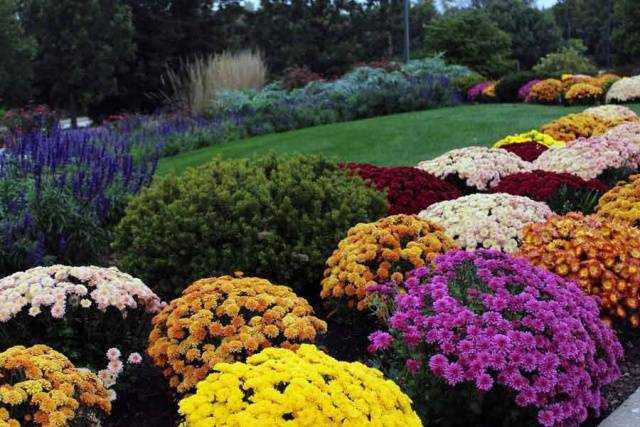
Choosing the right time for planting chrysanthemums multiflora seedlings is crucial to ensure their successful growth and development. The timing will depend on various factors, including the climate and the specific variety of chrysanthemums multiflora you are planting. Here are some guidelines to help you choose the right time:
- Climate: Chrysanthemums multiflora thrive in cool temperatures and require a certain amount of cold exposure to initiate flowering. It is recommended to plant the seedlings in the spring or fall when the temperatures are mild and the risk of frost has passed. However, if you live in a region with a warm climate, planting in the fall might be more suitable.
- Variety-specific recommendations: Different varieties of chrysanthemums multiflora may have specific requirements regarding planting time. Some varieties may prefer planting in the spring, while others may do better if planted in the fall. Consult the seed packet or plant label for any specific recommendations for the variety you are planting.
- Local gardening resources: Reach out to local gardening experts, nurseries, or agricultural extension offices to get information about the best time for planting chrysanthemums multiflora in your area. They will have knowledge of the local climate and can provide guidance tailored to your specific location.
By carefully considering these factors, you can choose the most optimal time for planting chrysanthemums multiflora seedlings and give them the best chance at thriving in your garden.
Factors to Consider
- Climate: Chrysanthemums Multiflora thrive in a cool to moderate climate with temperatures ranging between 50-70°F (10-21°C). Consider the local climate and growing season before planting your seedlings.
- Soil: Well-drained soil with a pH level between 6.5-7.5 is ideal for chrysanthemums. Consider testing your soil and amending it if necessary to provide the optimal growing conditions for your seedlings.
- Sunlight: Chrysanthemums Multiflora requires at least 6 hours of direct sunlight per day to thrive. Choose a location in your garden that receives ample sunlight and provides proper exposure to the plants.
- Spacing: Chrysanthemum seedlings should be spaced at least 12-18 inches (30-45 cm) apart to allow for proper air circulation and growth. Consider the mature size of the plants and plan accordingly to avoid overcrowding.
- Watering: Chrysanthemums Multiflora requires regular watering to maintain soil moisture. Consider a watering schedule that provides consistent moisture without overwatering the plants.
- Fertilization: Chrysanthemum seedlings benefit from regular fertilization. Consider using a balanced fertilizer with a ratio of 10-10-10 or a slow-release fertilizer formulated specifically for chrysanthemums.
- Pest and Disease Control: Chrysanthemums are susceptible to pests and diseases such as aphids, leafhoppers, and powdery mildew. Consider implementing proper pest control measures and regularly inspect your plants for any signs of damage or disease.
- Companion Planting: Consider companion planting with other beneficial plants such as marigolds or daisies to help deter pests and attract pollinators to your chrysanthemums.
Step 2: Preparing the Soil
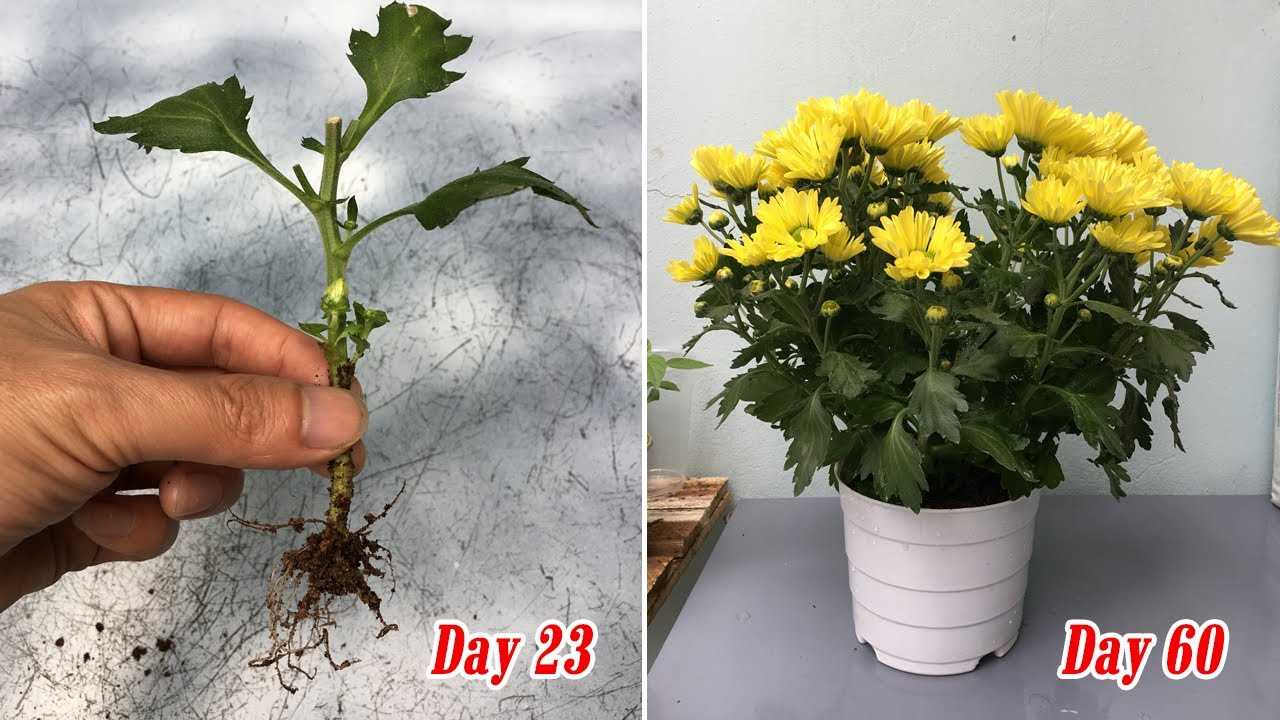
Preparing the soil is an essential step in planting Chrysanthemums Multiflora seedlings. By ensuring that the soil is suitable and well-prepared, you can provide the necessary conditions for the seedlings to thrive.
1. Choose the right location
- Chrysanthemums Multiflora prefers a sunny location with well-drained soil.
- Ensure that the area you choose provides at least 6 hours of direct sunlight daily.
2. Clear the area
- Remove any weeds or grass from the planting area.
- Clear away any debris, rocks, or other obstacles that may hinder the growth of the seedlings.
3. Loosen the soil
- Use a garden fork or a tiller to loosen the soil in the planting area.
- Loosen the soil to a depth of at least 12 inches (30 cm) to ensure proper root development.
4. Improve the soil
- Add organic matter, such as compost or well-rotted manure, to enrich the soil.
- Mix the organic matter into the loosened soil thoroughly.
5. Test the soil pH
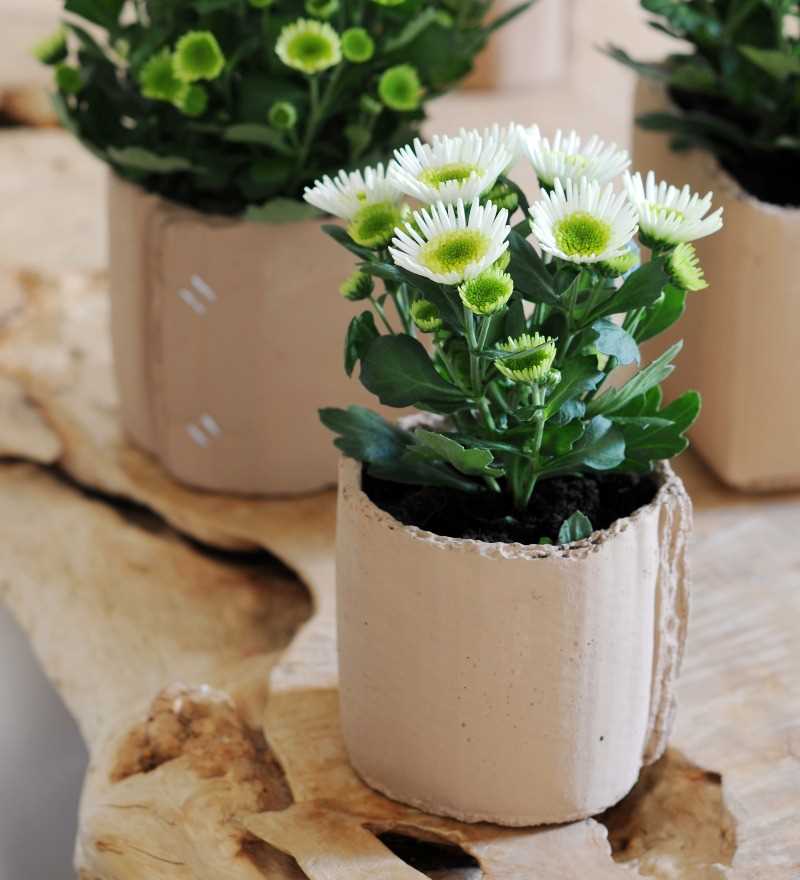
- Use a soil testing kit to determine the pH level of the soil.
- Chrysanthemums Multiflora prefer a slightly acidic to neutral soil pH (around 6.0 to 7.0).
- If the soil pH is too high or too low, you can adjust it by adding the appropriate soil amendments.
Note: It is always recommended to follow the instructions provided by the soil testing kit or consult a local gardening expert for advice on soil amendments.
6. Level the soil surface
- Smooth out the soil surface using a rake or garden hoe to create an even planting bed.
- Ensure that the soil surface is level and free from any large clumps or uneven areas.
7. Water the soil
- Before planting the seedlings, water the soil thoroughly to provide moisture for the roots.
- Aim to moisten the soil to a depth of at least 6 inches (15 cm).
8. Allow the soil to settle
- After watering, allow the soil to settle for a day or two before planting the Chrysanthemums Multiflora seedlings.
- During this time, the soil will have a chance to absorb the water and stabilize.
By following these steps to prepare the soil, you will provide the Chrysanthemums Multiflora seedlings with a favorable environment for growth and development.
Creating the Ideal Growing Conditions
- Choose the Right Location: Chrysanthemums Multiflora thrive in full sunlight. Choose a location in your garden that receives at least 6-8 hours of direct sunlight each day.
- Prepare the Soil: Chrysanthemums Multiflora prefer well-draining soil. Before planting, amend the soil with organic matter such as compost or well-rotted manure to improve drainage and fertility.
- Test the Soil: Use a soil testing kit to check the pH level of your soil. Chrysanthemums Multiflora prefer slightly acidic soil with a pH range of 6.5 to 7.5. If the pH level is too high or too low, you can adjust it by adding the appropriate soil amendments.
- Provide Adequate Air Circulation: Ensure that there is sufficient space between the plants to allow for proper air circulation. This helps prevent diseases and promotes healthy growth.
- Watering: Chrysanthemums Multiflora require regular watering to thrive. Keep the soil evenly moist, but not waterlogged. Water at the base of the plants to avoid wetting the leaves, as this can lead to fungal diseases.
- Fertilization: Chrysanthemums Multiflora benefit from regular fertilization. Use a balanced fertilizer, such as 10-10-10, and apply it according to the instructions on the package. Avoid over-fertilizing, as this can result in leggy growth or reduced flower production.
- Mulching: Apply a layer of organic mulch, such as straw or wood chips, around the base of the plants. This helps conserve moisture, suppresses weeds, and regulates soil temperature.
- Protection from Extreme Temperatures: Chrysanthemums Multiflora can be sensitive to extreme cold or heat. Provide them with protection, such as using row covers or bringing potted plants indoors during frost or heatwaves.
Step 3: Selecting and Preparing Seedlings
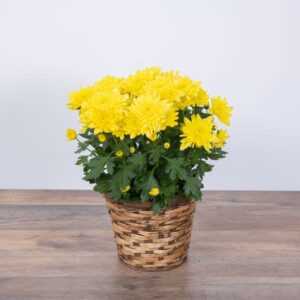
Choosing the right seedlings is crucial for successful chrysanthemum multiflora planting. Here are the steps to select and prepare seedlings:
1. Purchase or obtain seedlings
- Visit a local nursery or garden center to purchase chrysanthemum multiflora seedlings.
- If you prefer, you can also start growing your own seedlings from seeds. In that case, make sure to follow the instructions on the seed packet for optimal germination.
- Alternatively, you can ask fellow gardeners or gardening groups if they have any spare seedlings to share or exchange.
2. Inspect the seedlings
- Examine the seedlings for any signs of disease or pests. Look for healthy, green leaves and sturdy stems.
- Avoid choosing seedlings with yellow or wilted leaves, as they may indicate poor health or nutrient deficiencies.
- If possible, select seedlings that are already in bloom or showing signs of budding, as they will provide a head start in the flowering process.
3. Prepare the planting area
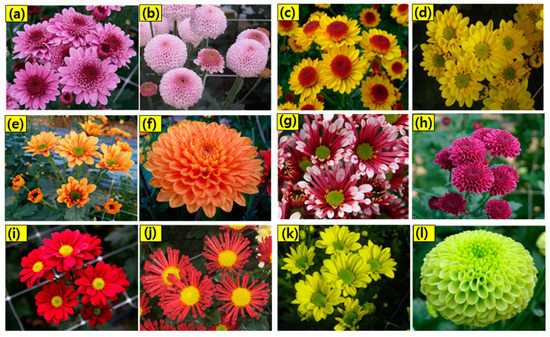
- Choose a well-draining location with full sun exposure for planting the chrysanthemum seedlings.
- Clear any weeds or debris from the planting area and loosen the soil to a depth of at least 8-10 inches.
- Ensure the soil is rich in organic matter by incorporating compost or well-rotted manure.
- Consider conducting a soil pH test and adjust the pH if necessary to ensure optimal growing conditions for chrysanthemums (pH level of 6.5 to 7.5 is recommended).
4. Transplant the seedlings
- Carefully remove the seedlings from their containers, taking care not to damage the roots.
- Dig a hole in the prepared planting area that is slightly larger than the root ball of the seedling.
- Place the seedling in the hole and gently backfill with soil, ensuring that the top of the root ball is level with the soil surface.
- Lightly firm the soil around the seedling to eliminate any air pockets.
By following these steps, you will be well on your way to planting healthy chrysanthemum multiflora seedlings for a beautiful and vibrant garden.
Choosing Healthy and Vigorous Seedlings
When planting chrysanthemums multiflora from seedlings, it is crucial to choose healthy and vigorous plants. This will ensure that your plants have a strong start and will be more likely to thrive and produce beautiful flowers. Here are some tips to help you choose the best seedlings:
- Inspect the leaves: Look for seedlings with vibrant green leaves that appear healthy and free from any spots or discolorations. Avoid seedlings with yellow, wilted, or damaged leaves, as these may indicate poor health.
- Check the stems: Examine the stems of the seedlings to make sure they are sturdy and free from any signs of damage or disease. Avoid seedlings with weak or wilted stems, as these may have difficulty establishing themselves in the garden.
- Look for well-developed roots: Carefully remove the seedlings from their containers and check the root system. Healthy seedlings should have well-developed white roots that are not congested or tangled. Avoid seedlings with brown or rotten roots, as these may struggle to establish themselves in the soil.
- Choose compact plants: Opt for seedlings that have a compact and bushy growth habit. These plants are more likely to produce a higher number of flowers and will have a more attractive appearance in your garden.
- Avoid flowering seedlings: While it may be tempting to choose seedlings that have already started to bloom, it is best to avoid them. Flowering seedlings have already expended a significant amount of energy and may not have enough reserves to establish themselves in the soil successfully.
By following these tips, you can be confident in choosing healthy and vigorous chrysanthemum multiflora seedlings for your garden. Remember to give your plants the proper care after planting to ensure their continued success.
Step 4: Planting the Seedlings
After preparing the soil and seedlings, it’s finally time to plant them in your garden. Follow these steps to ensure the successful transplantation of your chrysanthemum seedlings:
- Choose a suitable location in your garden for planting. Chrysanthemums require at least six hours of direct sunlight a day, so select a spot that receives ample sunlight. The soil should be well-draining and rich in organic matter.
- Dig a hole in the soil that is slightly larger and deeper than the root ball of the seedling. This will provide enough space for the roots to spread out and establish themselves.
- Carefully remove the seedling from its pot, being careful not to damage the roots.
- Place the seedling in the hole, ensuring that the top of the root ball is level with the soil surface. Gently fill in the hole with soil, taking care not to compact it too tightly around the roots.
- Water the newly planted seedling thoroughly to settle the soil and provide moisture to the roots.
- Continue to water the seedlings regularly, keeping the soil moist but not waterlogged. Chrysanthemums prefer evenly moist soil, so monitor the moisture levels closely.
- Consider adding a layer of mulch around the seedlings to help retain moisture, suppress weeds, and regulate soil temperature.
- Monitor the seedlings for any signs of stress, pests, or diseases. If necessary, take appropriate action to address any issues that arise.
By following these steps, you can ensure that your chrysanthemum seedlings have the best chance of thriving in their new garden home. With proper care and attention, they will grow into beautiful and vibrant plants that will brighten up your landscape.
Proper Techniques for Transplanting
Transplanting chrysanthemum multiflora seedlings is an important step in their growth process. It ensures that the seedlings are properly placed in the desired location for optimal growth. Here are some proper techniques for transplanting chrysanthemum multiflora:
- Choose the Right Time: It is crucial to choose the right time for transplanting chrysanthemum multiflora seedlings. The ideal time is when the seedlings have grown to a size where they have developed a strong root system but are not yet root-bound.
- Prepare the Soil: Before transplanting, prepare the soil by loosening it and removing any weeds or debris. Ensure that the soil is well-draining and enriched with organic matter.
- Water the Seedlings: Before removing the seedlings from their containers, water them thoroughly. This will help loosen the soil and make it easier to remove the seedlings without damaging their roots.
- Transplanting Process: Gently remove each seedling from its container, being careful not to damage the roots. Dig a hole in the prepared soil that is slightly larger than the root ball of the seedling. Place the seedling in the hole, making sure that the top of the root ball is level with the soil surface. Backfill the hole with soil, firming it gently around the seedling to eliminate any air pockets.
- Watering After Transplanting: After transplanting, water the seedlings thoroughly to help settle the soil around the roots and promote their establishment in the new location. Ensure that the soil remains consistently moist but not waterlogged.
- Provide Support: If the chrysanthemum multiflora seedlings are tall or have weak stems, it is important to provide support. Insert stakes or plant supports near the seedlings and tie them gently to prevent them from falling over or getting damaged.
- Monitor Growth: Keep a close eye on the transplanted seedlings and monitor their growth. Provide regular care, such as watering, fertilizing, and removing any pests or diseased leaves.
- Consider Hardening Off: If the seedlings were previously grown in a controlled environment, consider hardening them off before transplanting. This involves gradually exposing the seedlings to the outdoor environment to acclimate them to the new conditions.
By following these proper techniques for transplanting chrysanthemum multiflora seedlings, you can ensure their successful establishment and promote healthy growth. Remember to provide ongoing care and maintenance to enjoy beautiful and vibrant chrysanthemums in your garden.
Step 5: Providing the Proper Care
Once your chrysanthemum multiflora seedlings are planted, it is important to provide them with the proper care to ensure healthy growth and abundant blooms. Follow these tips to ensure your plants thrive:
1. Watering
Chrysanthemum multiflora seedlings require regular watering to keep the soil consistently moist. Water the plants deeply, ensuring that the water reaches the roots. Avoid overwatering as excessive moisture can lead to root rot. Use a watering can or a hose with a gentle spray to water the seedlings.
2. Fertilizing
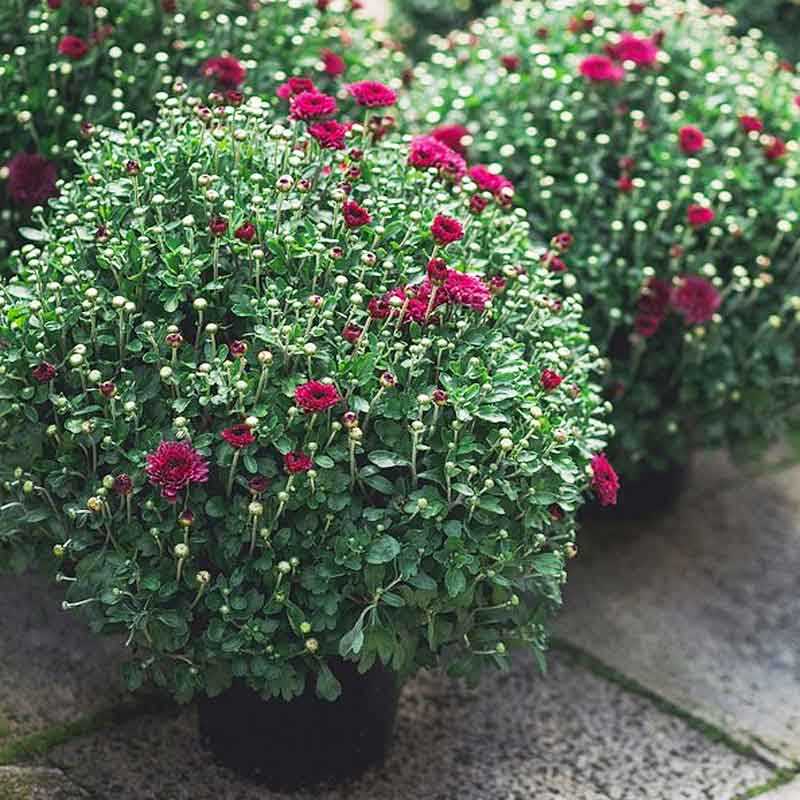
Feed your chrysanthemum multiflora seedlings with a balanced fertilizer every two weeks. This will provide them with the necessary nutrients for robust growth. Choose a fertilizer that is specifically formulated for flowering plants. Follow the instructions on the fertilizer packaging for the proper dosage.
3. Mulching
Apply a layer of mulch around the base of your chrysanthemum multiflora seedlings to help retain moisture, suppress weeds, and regulate soil temperature. Use organic mulch such as straw, wood chips, or compost. Spread the mulch evenly, keeping it a few inches away from the stems to prevent rotting.
4. Staking and Support
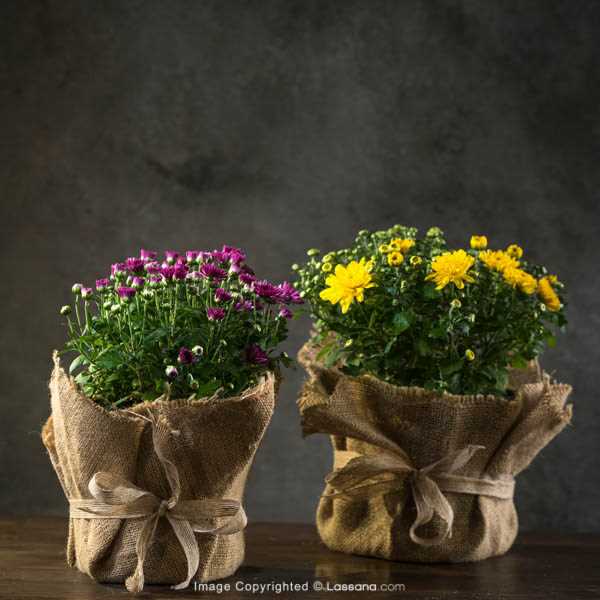
As chrysanthemum multiflora seedlings grow and produce flowers, they may require additional support to prevent the stems from breaking under the weight of the blooms. Insert stakes or plant supports around the seedlings and gently tie the stems to them using soft twine or plant ties. This will help keep the plants upright and prevent damage.
5. Pruning
Regular pruning is essential for maintaining the shape and size of your chrysanthemum multiflora plants. Pinch off any dead or faded flowers to encourage new blooms and remove any damaged or diseased foliage. Prune the plants in early spring before new growth begins.
6. Pest and Disease Control
Monitor your chrysanthemum multiflora seedlings regularly for any signs of pests or diseases such as aphids, powdery mildew, or rust. If you notice any issues, treat them immediately using organic insecticides or fungicides. Remove and dispose of infected plant material to prevent further spread.
7. Winter Protection
In regions with cold winters, provide protection for your chrysanthemum multiflora plants to ensure their survival. Apply a layer of mulch around the base of the plants to insulate the roots. You can also cover the plants with a frost blanket or bring them indoors if necessary.
By providing the proper care to your chrysanthemum multiflora seedlings, you can enjoy beautiful, vibrant blooms throughout the growing season. Follow these steps and watch your plants thrive!
Questions and Answers:
Why should I plant Chrysanthemums Multiflora in seedlings?
Planting Chrysanthemums Multiflora in seedlings allows for better control of the growing conditions and ensures the plants have a strong and healthy start. Seedlings also have a higher chance of survival compared to direct sowing.
How do I start planting Chrysanthemums Multiflora in seedlings?
To start planting Chrysanthemums Multiflora in seedlings, you will need seeds, seedling trays, seed starting mix, and a warm and brightly lit area. Fill the seedling trays with the seed starting mix, plant the seeds at the recommended depth, water gently, and place the trays in a warm and brightly lit area.
When is the best time to plant Chrysanthemums Multiflora in seedlings?
The best time to plant Chrysanthemums Multiflora in seedlings is in early spring, around 6-8 weeks before the last frost date in your area. This will give the seedlings enough time to grow and develop before transplanting them outdoors.
What kind of soil should I use for planting Chrysanthemums Multiflora in seedlings?
You should use a well-draining soil mix specifically designed for seed starting. This type of soil will provide the necessary nutrients and moisture for the seedlings to grow strong and healthy.
How often should I water the Chrysanthemums Multiflora seedlings?
You should water the Chrysanthemums Multiflora seedlings whenever the top inch of soil feels dry. It is important to keep the soil evenly moist but not soaking wet. Overwatering can lead to root rot and other issues.
What is the ideal temperature for growing Chrysanthemums Multiflora seedlings?
The ideal temperature for growing Chrysanthemums Multiflora seedlings is around 70 to 75°F (21 to 24°C). This temperature range promotes optimal growth and helps the seedlings develop strong roots.
Can I transplant the Chrysanthemums Multiflora seedlings directly into the garden?
No, it is not recommended to transplant the Chrysanthemums Multiflora seedlings directly into the garden. They need to be gradually acclimated to outdoor conditions by hardening them off. This involves slowly exposing the seedlings to the outdoor environment over a period of time before transplanting them.







